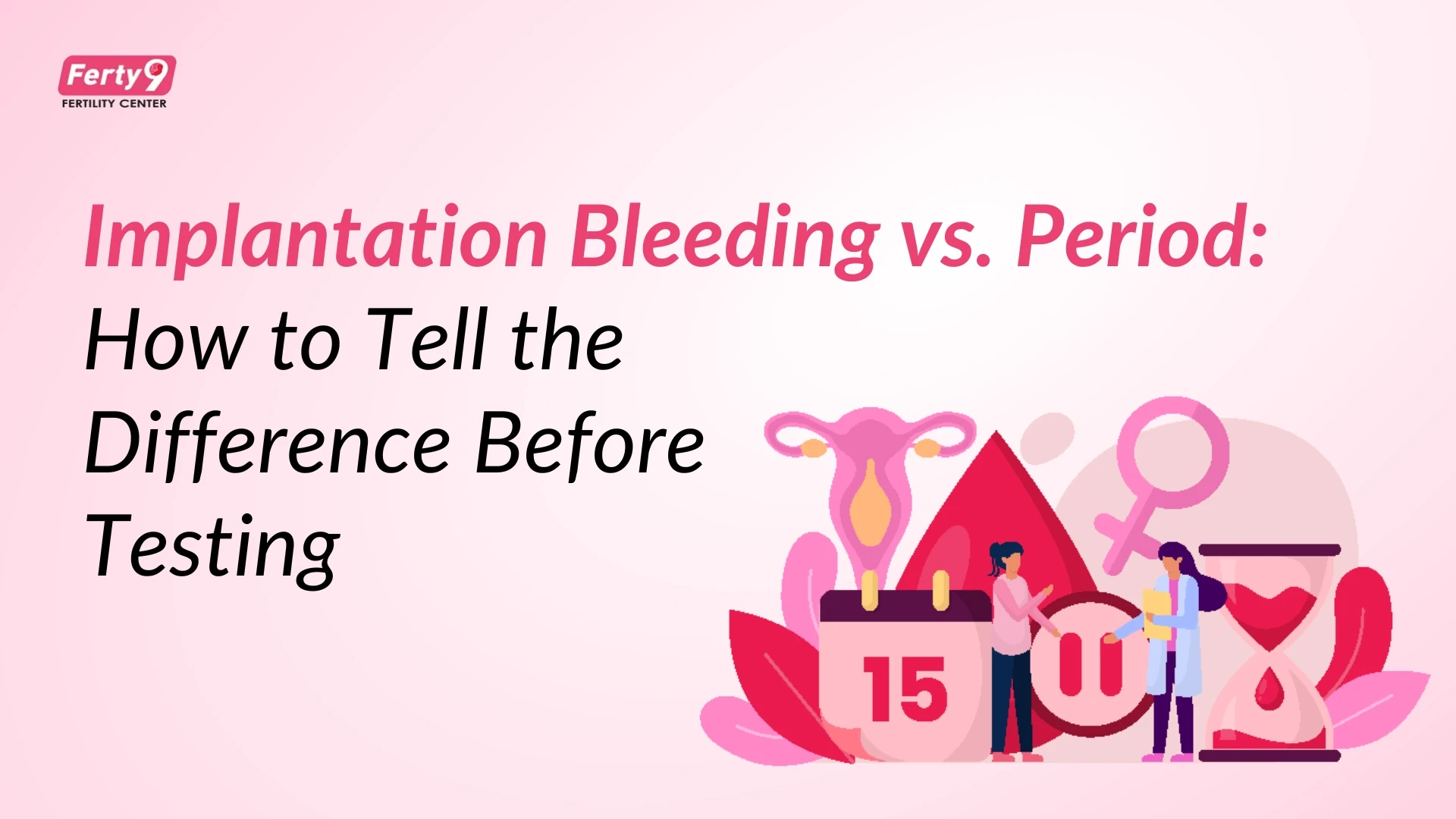For any woman hoping to conceive, especially after a fertility treatment like IUI or IVF, the two-week wait can be a time of high alert. Every small change is noticed, and seeing a spot of blood can be confusing. Is it an early period, or could it be the sign you’ve been waiting for—implantation bleeding?
At FERTY9, one of India’s leading fertility centres, we understand this anxiety. Distinguishing between implantation bleeding and a regular period can be tricky, as they can happen around the same time. This guide is designed to help you understand the key differences in simple terms.
Also Read: How Soon Can a Pregnancy Test Be Taken After Implantation?
What is Implantation Bleeding?
Implantation bleeding is light spotting or bleeding that occurs when a fertilized egg (embryo) attaches itself to the inner lining of your uterus. Think of it like the embryo burrowing into its new home for the next nine months. This process can sometimes disrupt tiny blood vessels in the uterine wall, causing a small amount of bleeding.
It’s important to know that not every woman will experience implantation bleeding. In fact, most don’t. But if you do, knowing what to look for can be helpful.
The Key Differences
Let’s break down the four main factors to help you tell the difference between implantation bleeding and your period.
1. Timing: When Does It Happen?
- Implantation Bleeding: This typically occurs about 6 to 12 days after ovulation and fertilization. If you’ve had an IUI, this is about 6-12 days after the procedure. If you’ve had an IVF transfer, it might be a bit sooner, depending on whether you had a Day 3 or Day 5 embryo transfer. It often happens a few days before your period is due.
- Period: A menstrual period starts like clockwork for most women, typically every 28-30 days. It signals the start of a new cycle because pregnancy has not occurred.
The Clue: Spotting that happens a few days to a week before you expect your period is more likely to be implantation bleeding.
2. Flow: How Heavy is the Bleeding?
- Implantation Bleeding: The flow is very light. It’s more like “spotting” than actual bleeding. It’s usually not enough to need a sanitary pad; often, it’s just a few drops you might notice when you wipe. The bleeding is inconsistent and does not get heavier.
- Period: A period usually starts light and then gets progressively heavier for a day or two, before tapering off. It has a continuous flow that requires a pad or tampon.
The Clue: If the bleeding is extremely light, stops and starts, and never becomes a real “flow,” it’s more indicative of implantation.
3. Colour: What Does It Look Like?
- Implantation Bleeding: The colour is often different from your usual period blood. Because the blood is older and has taken longer to travel out, it typically appears as a light pink, a rusty brown, or a brownish discharge.
- Period: Period blood is usually a vibrant, bright red, especially on the heaviest days of your flow.
The Clue: Pink or brown blood is a strong sign that it might be implantation bleeding, not your regular period.
4. Cramping: What Does the Pain Feel Like?
- Implantation Bleeding: If cramping occurs, it is generally very mild and short-lived. Women often describe it as a light pulling, tingling, or pricking sensation in the lower abdomen.
- Period: Menstrual cramps can range from dull aches to severe, debilitating pain (dysmenorrhea) that can last for several days. They are often more intense and persistent.
The Clue: Mild, fleeting cramps that don’t feel like your usual pre-menstrual cramps could be associated with implantation.
Summary Table
| Feature | Implantation Bleeding | Menstrual Period |
| Timing | 6-12 days after ovulation (usually before period is due) | Starts on the expected date of your cycle (every 28-30 days) |
| Flow | Very light spotting, on-and-off | Starts light, gets heavier, then tapers off |
| Colour | Light pink or brown | Bright red |
| Duration | A few hours to 2 days | 3 to 7 days |
| Cramping | Mild, light pricking or pulling | Can be intense and last for days |
When in Doubt, The Test Result is Your True Answer
While these signs can be very helpful, they are not a way to confirm a pregnancy. The symptoms can be subtle and easily mistaken.
The only way to know for certain whether you are pregnant is to take a pregnancy test. At FERTY9, we advise waiting for the full two weeks after your procedure before taking a test, as this gives the pregnancy hormone (hCG) enough time to build up to detectable levels.
If you experience any bleeding that is heavy, bright red, or accompanied by severe pain, please contact your doctor immediately. We are here to guide you through every step of this journey with care and expertise.





























